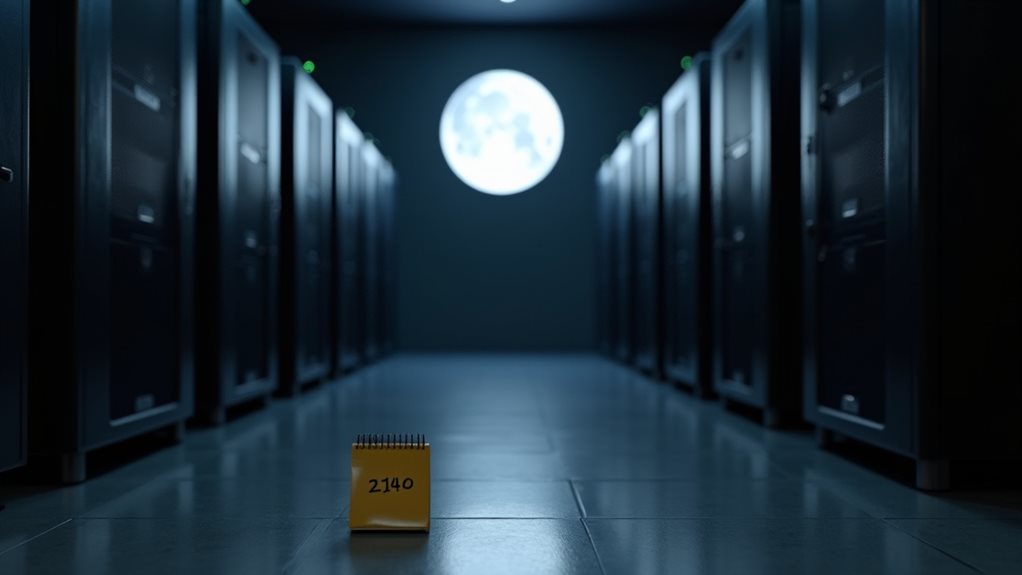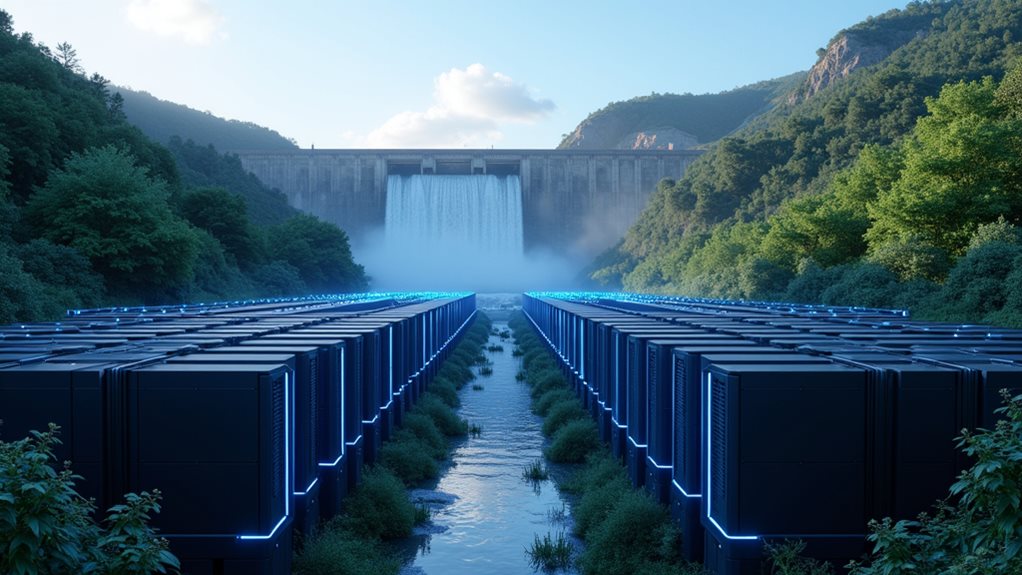The last Bitcoin will be mined around the year 2140, though by 2050, a whopping 99.8% of all Bitcoin will already be in circulation. That's right – miners will spend nearly 90 years chasing after that final 0.2%. Currently, over 19.8 million of the maximum 21 million Bitcoins exist, with new blocks mined every 10 minutes. Through a system of halvings every four years, Bitcoin's release gets increasingly slower. The journey to that final coin holds some fascinating twists.

While Bitcoin continues to dominate headlines, there's a fascinating countdown happening in the background. The clock is ticking toward the year 2140 – that's when the very last Bitcoin will be mined. Yes, you read that right. 2140. That's not a typo, and no, we won't be around to see it.
The whole thing works like clockwork, really. Every four years, like some cosmic financial alarm, Bitcoin goes through something called a halving. It's pretty straightforward: the reward miners get for creating new blocks gets cut in half. Started at 50 BTC per block back in the day. Now? Way less. By 2024, miners will only get 3.125 BTC for their troubles. Talk about diminishing returns.
Here's the kicker: over 19.8 million Bitcoins are already in circulation as of September 2024. That's out of a maximum supply of 21 million. Ever. Period. No exceptions, no matter how nicely you ask. The system was designed this way to create scarcity – like digital gold, but with more computer fans whirring in the background. By 2050, 99.8% of Bitcoin will be mined and in circulation.
The next halving is coming up in March 2028, when the reward drops to 1.5625 BTC. After that, it just keeps getting smaller. And smaller. And smaller. Every 210,000 blocks, like clockwork. The miners keep mining, the rewards keep shrinking, and the whole system keeps chugging along every 10 minutes, block after block. Looking at historical data, each previous halving has consistently led to significant price increases in the following months. The 2020 halving demonstrated this pattern with Bitcoin's value skyrocketing from $9,850 to an impressive peak of $60,000 within months. Some analysts predict Bitcoin could reach price targets between $80,000 and $250,000 following future halvings.
But here's where it gets interesting. Once all the Bitcoins are mined, miners won't just pack up their rigs and go home. They'll still need to keep the network running. Their payday? Transaction fees. That's right – those annoying little fees we pay to move Bitcoin around will become the main source of income for miners. Talk about a plot twist.
The whole system is a massive experiment in digital economics. Every halving potentially affects Bitcoin's value – historically, prices have jumped after these events. But it's not just about the money. The halving schedule is Bitcoin's way of controlling inflation, ensuring that new coins enter circulation at a predictable, ever-slowing rate.
It's like a digital diet plan – gradually reducing portions until we hit that final Bitcoin in 2140. Until then, the mining continues, the halvings happen, and the countdown ticks on. Whether we're ready or not.
Frequently Asked Questions
What Happens to Bitcoin Miners After the Last Coin Is Mined?
Miners won't just disappear after the last Bitcoin.
They'll still process transactions and maintain network security, but their income will shift entirely to transaction fees instead of block rewards.
It's a massive change. They'll need to adapt their operations and possibly upgrade equipment for better energy efficiency.
Some might manipulate fees to stay profitable.
Bottom line: mining continues, but the game changes completely.
Network security remains essential.
Will Bitcoin's Value Change Significantly When Mining Reaches Its End?
Bitcoin's value post-mining is anyone's guess – seriously.
With block rewards gone, transaction fees will need to keep miners interested. Basic economics suggests scarcity could drive prices up, since all 21 million coins will be in circulation.
But here's the kicker: everything depends on adoption and network security. No more new coins means supply and demand takes center stage.
The market will do what markets do – act unpredictably.
Can Quantum Computers Speed up the Mining of Remaining Bitcoins?
Quantum computers can't actually speed up Bitcoin mining. Nope, not happening.
While these futuristic machines are impressive, Bitcoin's SHA-256 hash function isn't vulnerable to quantum shortcuts. The mining process is specifically designed to be a brute-force operation.
Sure, quantum computers might eventually pose threats to some cryptographic systems, but mining speed isn't one of them. The industry's already working on quantum-resistant solutions anyway.
Nice try, quantum enthusiasts.
How Will Transaction Fees Change After the Final Bitcoin Is Mined?
Transaction fees will skyrocket.
It's simple economics – miners need to make money somehow. Without block rewards, fees become their only income source.
Network costs will be market-driven, determined by user demand and processing speed requirements. Expect higher fees during peak times.
The good news? This won't happen until 2140, so there's plenty of time to prepare.
The bad news? Your great-great-grandkids might need deeper pockets to use Bitcoin.
What Backup Systems Exist if the Bitcoin Network Faces Issues Post-Mining?
Multiple backup systems protect Bitcoin's network from potential post-mining issues.
Decentralized solutions like Vault12 eliminate single points of failure.
Hardware wallets provide secure physical backups, while multi-signature systems require multiple approvals for added security.
Social recovery protocols let trusted contacts access assets if needed.
Quantum-resistant encryption shields against future threats.
And yes, there's automated backup systems – because humans are pretty terrible at remembering to do it manually.









